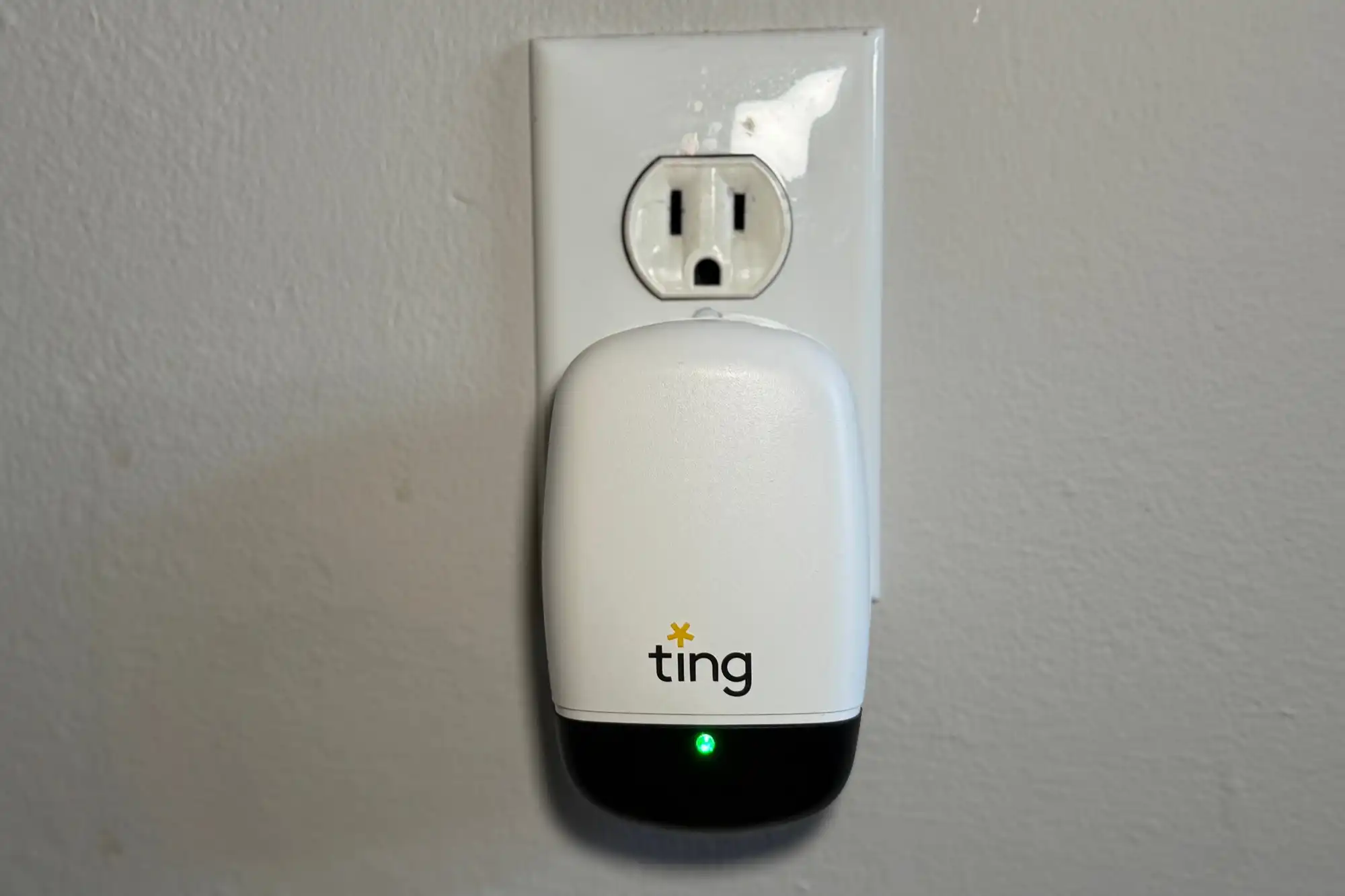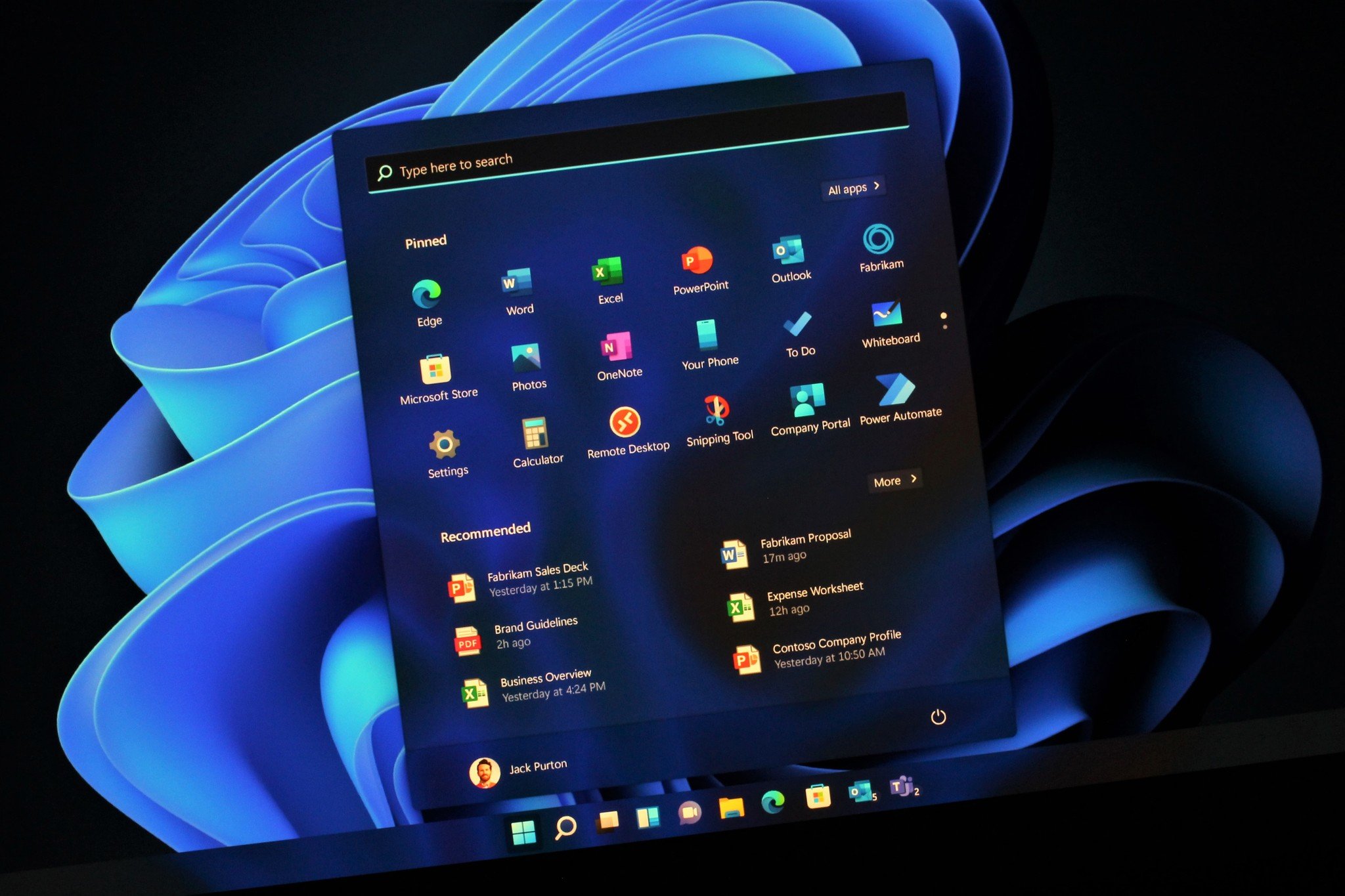The subscription-based Ting smart plug warns you of electrical faults in your home that could spark a fire.
A working smoke detector will alert you to a fire that’s already started. Install a Ting Sensor in your home and the subscription-based smart plug will alert to any electrical faults with the potential to start a fire long before one starts.
Specifications
This smallish device from Whisker Labs plugs into one of your home’s AC outlets, where it measures (30 million measurements per second) and analyzes voltage, looking for the anomalies that are characteristic of electrical arcing, a type of unsafe electrical discharge between conductors. And it’s important that you use a standard outlet, not a smart plug, a surge protector, or an uninterruptible power supply.
Ting delivers peace of mind: I know I’ll be warned of a dangerous electrical fault long before the problem can start a fire.
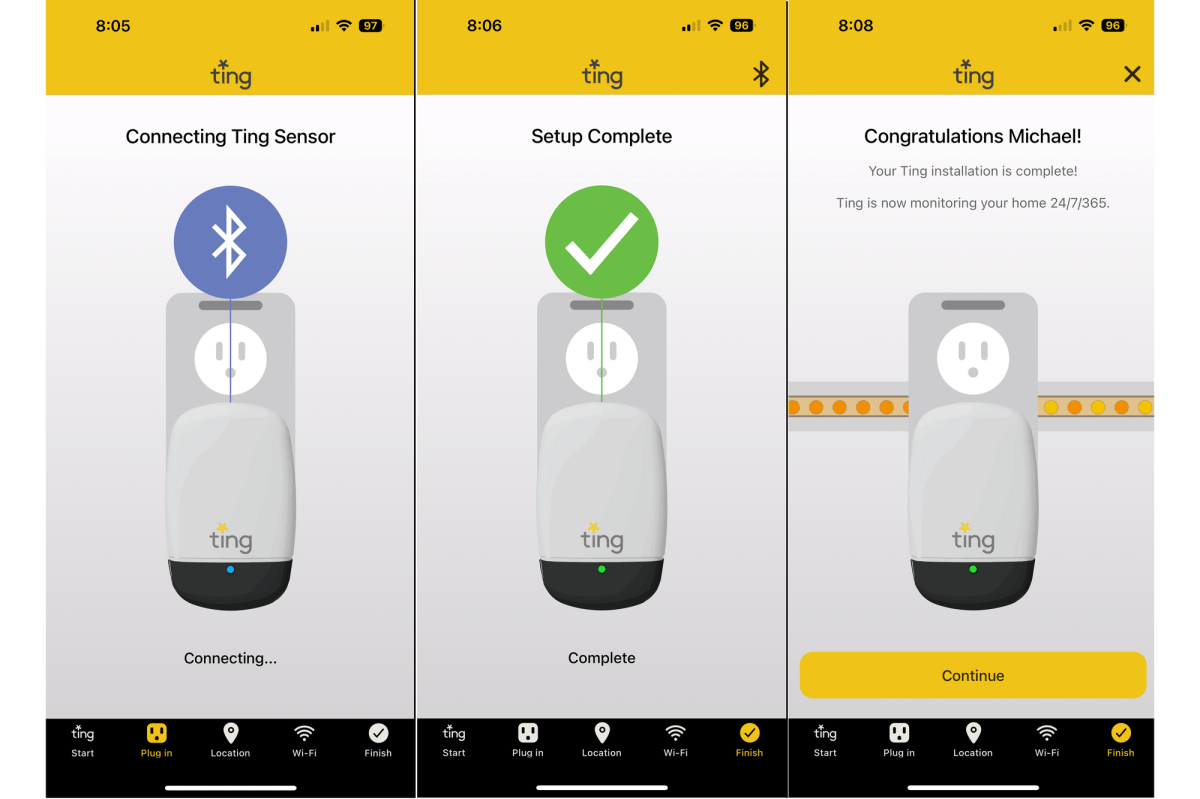
Michael Brown/Foundry
To understand arcing, consider lightning: The electricity in a cloud travels, or arcs, either to the ground or to another cloud. In the home, arcing can be caused by an overloaded circuit, or defective or damaged electrical wires or components (e.g., an outlet, a switch, or even the circuit-breaker panel itself). Arcing can also occur when electrical wiring or components become exposed to water, such as from a leaky pipe, a door or window, or the roof.
A Ting Sensor will not only detect arcing, but it can also identify the source of the arc: light switches, outlets, plugged-in devices, and so on. If problematic arcing is detected, a member of Ting’s fire-prevention team will call you to help isolate the hazard by instructing you to turn off circuits at your breaker panel, one at a time. Once the circuit with the problem has been identified, Whisker Labs will arrange for an electrician to be sent to your home to fix the problem. Ting subscriptions come with $1,000 in labor credit toward needed repairs performed by a licensed electrician.
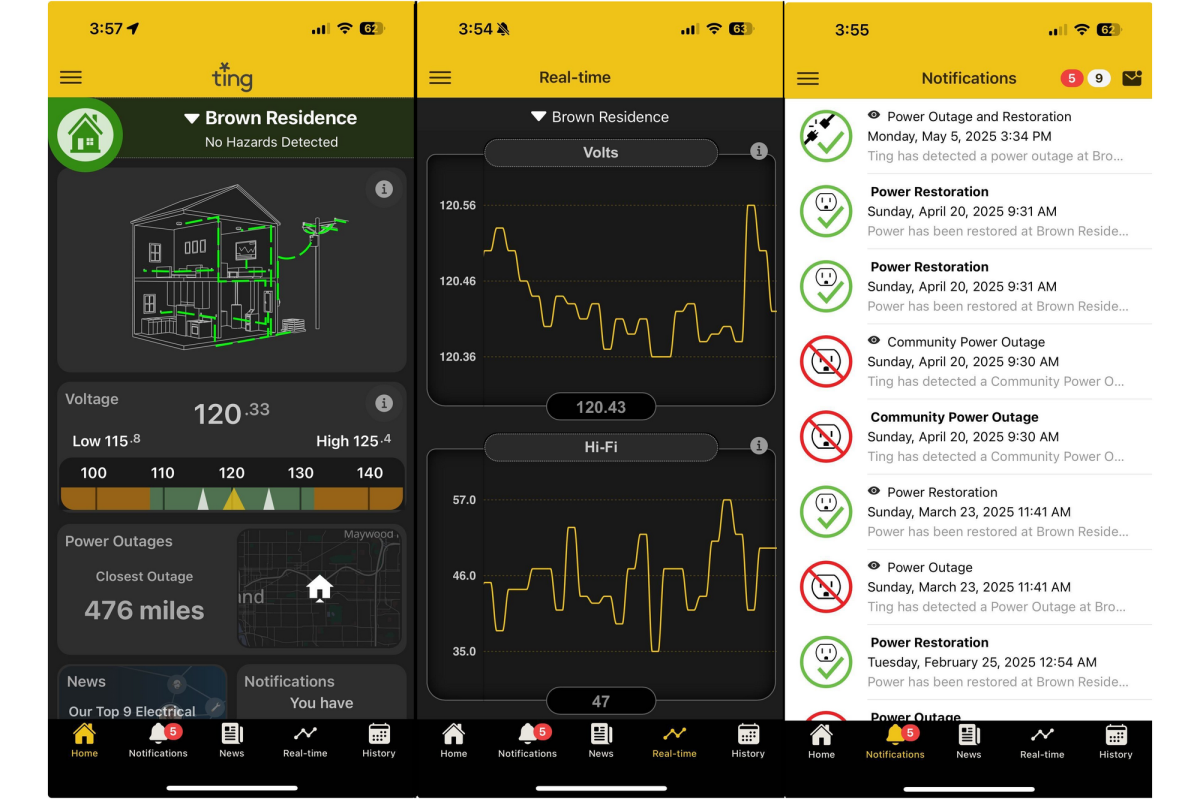
Michael Brown/Foundry
The device has an onboard 2.4GHz Wi-Fi adapter, and once it’s connected to your home network and you’ve installed the Ting app on your phone, the device will send you notifications of any detected problems. The Ting will also monitor the electricity coming into your home from your local utility, reporting voltage in real time, noting the peaks and valleys, and alerting you to service outages and when they’re restored.
An LED on the device, below its logo, indicates its operational state. You’ll want to see a solid green, which indicates normal operation. Dark blue indicates the Ting is in Bluetooth-pairing mode, blinking yellow means the device is acquiring an IP address; it turns solid yellow while checking for internet connectivity. A blinking green LED means the sensor is connecting to a Ting server; cancel the Ting service and the LED will glow a solid red. Curiously, the Ting’s LED won’t change color to warn you of an electrical problem; the device doesn’t have a speaker to sound a warning, either.
Should you buy a Ting?
Ting falls into that category of home safety that never proves its worth until it prevents a disaster. In that respect, it’s a lot like a smoke or carbon monoxide detector. I’ve had two Tings installed for nearly a year and have mostly forgotten they’re even here. I haven’t had any electrical problems pop up, so the only time I receive a notification from the Ting app is when there’s a utility outage.
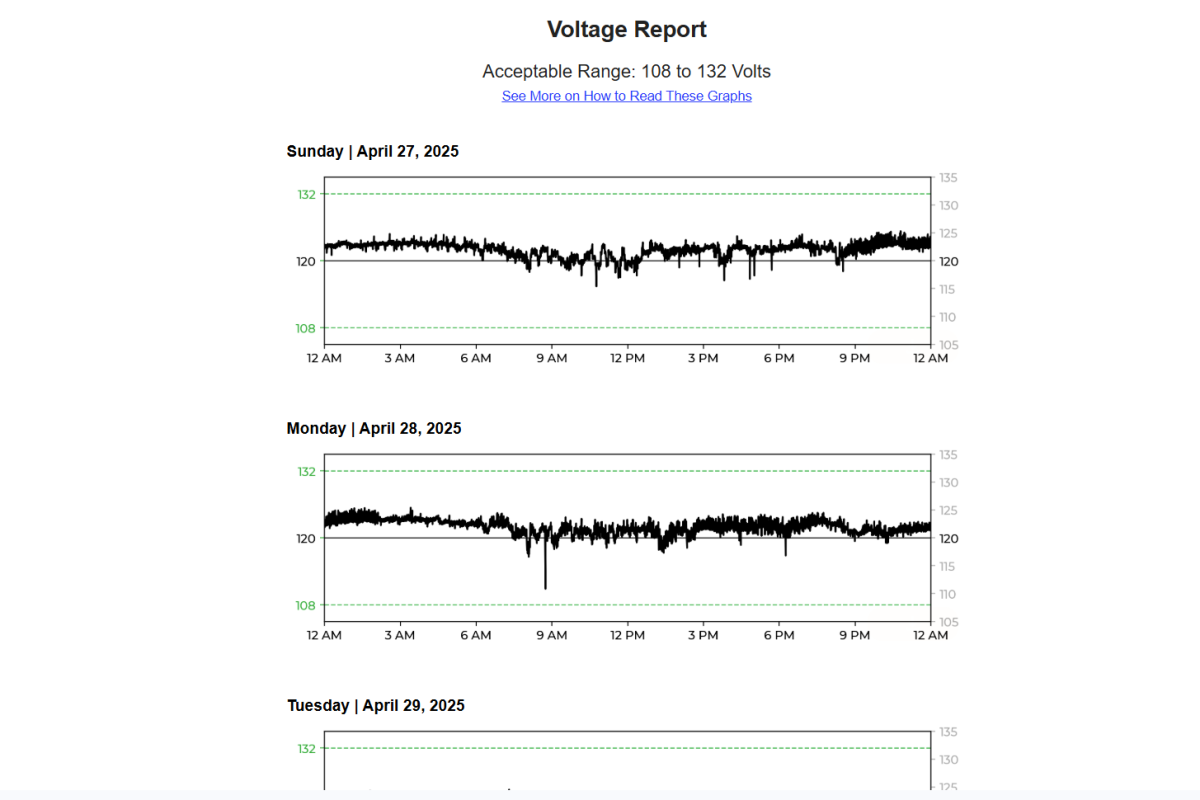
Michael Brown/Foundry
With any luck, I’ll never get a Ting alert that I need to act on. But I like the peace of mind that comes from knowing I’ll be warned before a dangerous electrical fault starts a fire.
Most homes will need just one Ting, which sells for $99, but in situations where there is more than one electrical service panel—such as an outbuilding or a room addition that has its own panel—you’ll need another Ting for each panel. That’s the situation I’m in after having a detached studio built in my backyard. And unfortunately, each Ting needs its own subscription, which costs $49 annually after the first year. Before you buy a Ting, you should check with the company handling your homeowners’ insurance to see if they provide the device and service as part of your coverage. Two of the largest companies do: State Farm and Nationwide. You’ll find more listed on Ting’s website.

